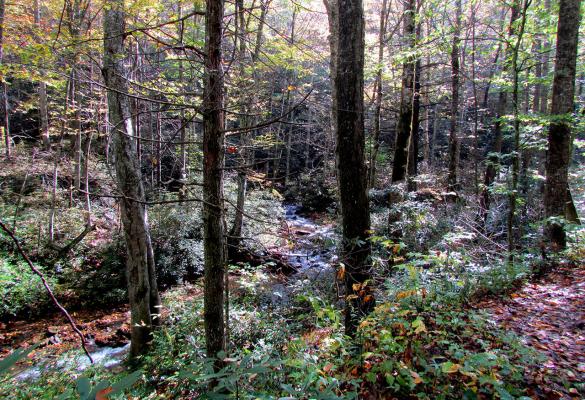Forest Conservation and Restoration
Forests are essential ecosystems that provide critical services to people and nature (WWF 2020). Temperate forests are the primary forest type within the United States, with boreal and tropical forests covering less area (National Geographic Society 2022). In the United States, forests cover 765 million acres, and woodlands cover 58 million acres (Perry et al. 2022). Forests provide food, fuel, oxygen, clean water, erosion control, and health benefits to people. Forests also enhance biodiversity, provide habitat, facilitate carbon sequestration, and can deliver protection from flooding and other impacts from climate change. For these reasons and others, forest conservation and restoration are crucial (WWF 2020). Forest restoration is the process of returning a forest to its healthy state; this can include a variety of actions such as prescribed burns, reforestation, controlling invasive species, and pruning competing underbrush (American Forests 2023). Forest conservation as a management practice is the maintenance of forested areas for both people and the environment. Both conservation and restoration are essential to forest management (Pawar and Rothkar, 2015).

Case Studies
And the Trees Will Last Forever
Apache- Sitgreaves National Forest and White Mountain Apache Tribe
Atlantic White Cedar Restoration at Pocosin Lakes National Wildlife Refuge
Chicago vs. The Asian Long- horned Beetle: A Portrait of Success
Collaborating to Enhance Habitat for the Montezuma Quail
Collins Emerald Ash Borer (EAB) Management and Response Plan
Forest Fuel Treatment Efficacy in BC
Forest Mayordomos: A Collaborative Forest Management Strategy
Forest Restoration in Campgrounds at Kings Canyon National Park
Forest Thinning to Restore Fire Resilience at Lassen Volcanic National Park
Fort Valley Restoration Project
Gila Watershed Partnership: Restoration to Mitigate Tamarisk Beetle Impacts
Goats as a Tool for Fire Management on the Pueblo of Sandia
Great Dismal Swamp Restoration Project
Habitat Restoration Within the Middle Rio Grande of New Mexico
Healthy Forest, Healthy Wildlife: The Wilds, Cumberland, Ohio
Lower North Fork Prescribed Fire
Modeling Forest Thinning Effects on Water Yield for the Four Forest Restoration Initiative
Mount Rose Preserve Forest Restoration Project
Nature-Based Solutions for Community-Level Preparedness to Wildfires
New England Cottontail Project
Oak Savanna Restoration along an Urban River
Partnerships Promote Healthy Forests and Clean Water
Post-Fire Watershed Restoration and Monitoring in the Chiricahua Mountains of Arizona
Prescribed Underburning in Southwest Oregon
Restoration of Ecosystem Health in Southwest Forests Project
Restoration of Riparian Trees and Shrubs on the Rio Grande Canalization Project
Riparian Restoration Experiment for Native Species Conservation in Vermont
Riparian Woodland and Grassland Restoration to Increase Resilience to Drought
Saint Vrain Forest Health Partnership Project
USA: Richmond Heritage Trail “Hike Through History," Rhode Island
Valle de Oro National Wildlife Refuge: An Urban Wildlife Refuge
Velvet Mesquite Thinning to Improve Riparian Forests along the San Pedro River
Water Transactions to Support Riparian Ecosystems in the Isleta Reach of the Rio Grande
Tools
California Reforestation Resources
Climate Adaptation Actions for Urban Forests and Human Health
Forest Service Open Space Conservation Strategy
Increasing the Pace of Restoration and Job Creation on Our National Forests
Mitigation Ideas: A Resource for Reducing Risk to Natural Hazards
National Forest System Reforestation Strategy: Growing and Nurturing Resilient Forests
Promoting Nature-Based Hazard Mitigation Through FEMA Mitigation Grants
Restoration and Conservation Opportunity Maps for the conterminous U.S. (CONUS)
Likely Benefits and Outcomes
This strategy is likely to achieve these project goals. Click to search for strategies with a similar benefit.
Related Green (natured-based) vs. Gray infrastructure
Explore opportunities to replace or supplement gray infrastructure with green infrastructure options.
